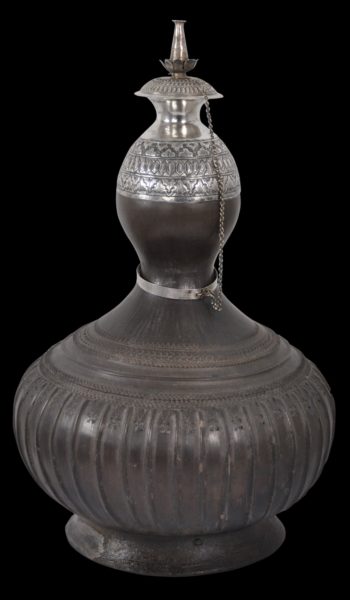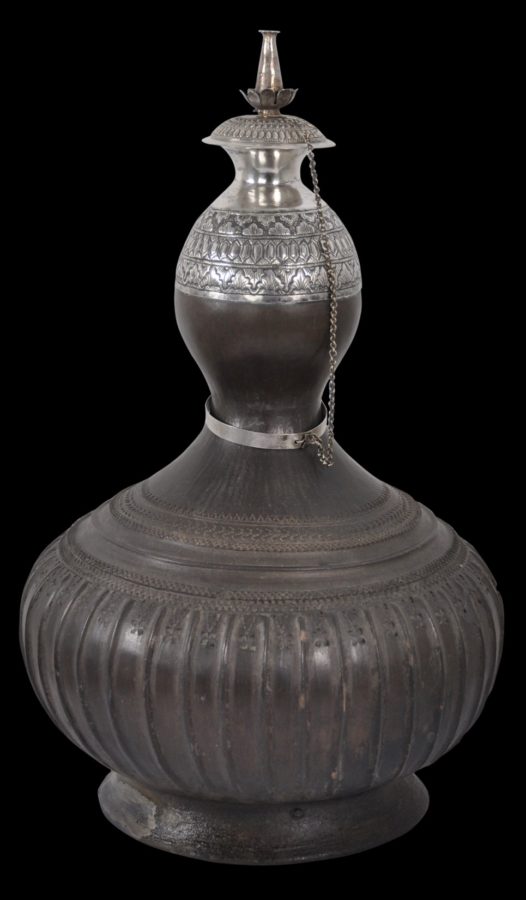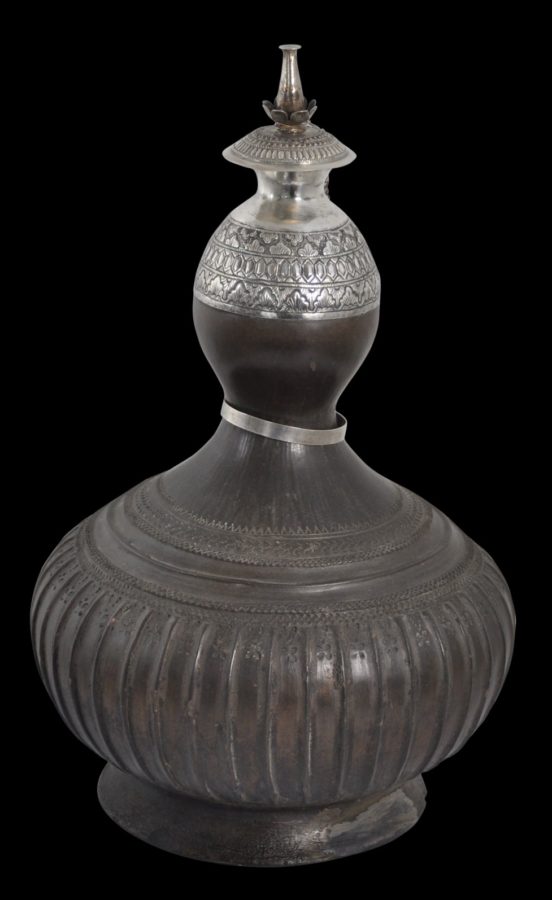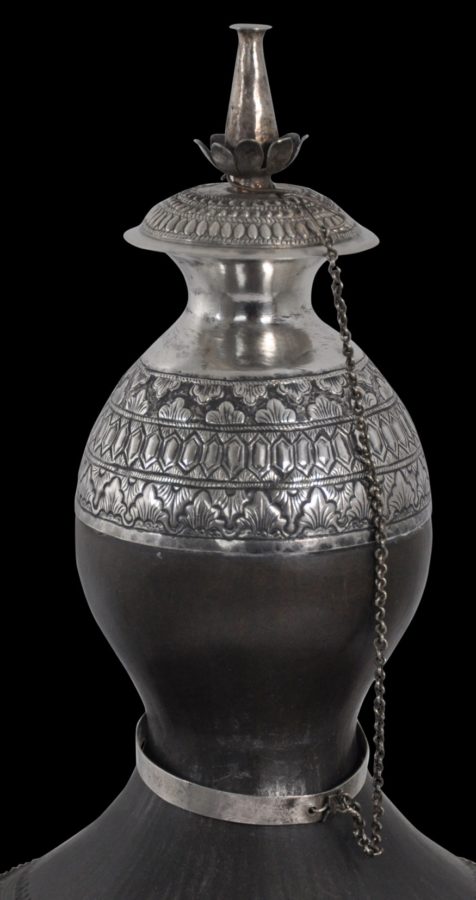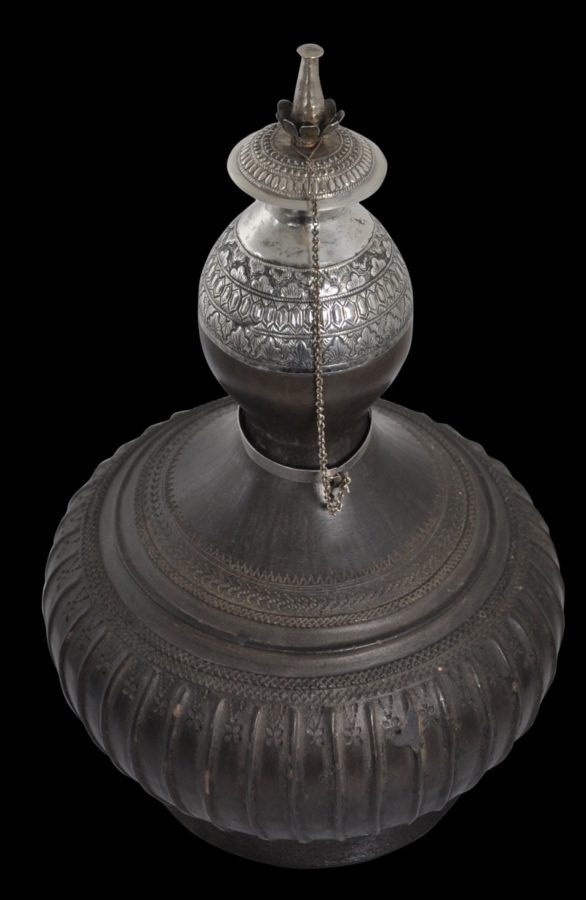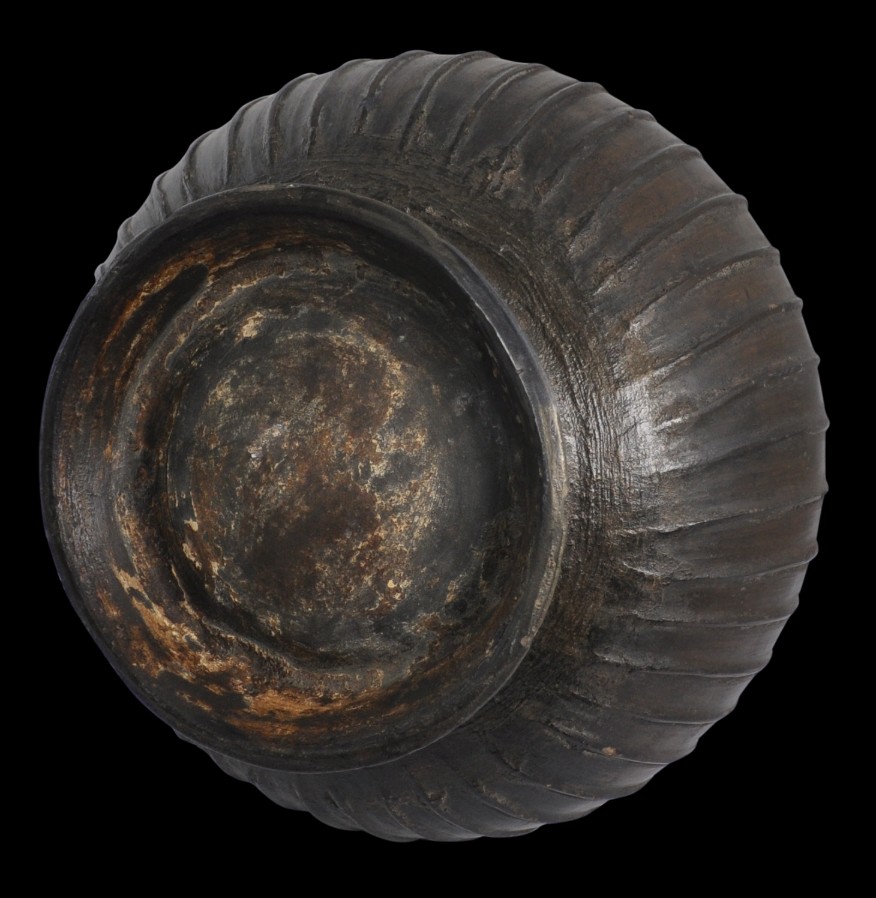This distinctive vessel was designed to hold water and was known as a labu ayer. It is based on the shape of a gourd, hence the Malay name labu ayer which translates literally as ‘water gourd’.
It is of earthenware with chased and engraved silver mounts.
A variety of water containers were used by the Malays. Water from streams and wells was believed to be purified if it was allowed to stand and the sediments settle for several days which necessitated the need for containers in which water could be stored but also from which it could be drunk.
The flask here is of locally-produced, light, porous earthenware. The lightness allowed for evaporation which helped to cool the contents. Such containers were produced in Kuala Kangsar in Perak, a regional centre for Malay earthenware production. Completed pots were raised by hand without the aid of a potting wheel. Once completed, they were left in the open air to dry for several days before being kilned in an open trench that was fired with burning coconut fibre.
The flask has a matt grey-green glaze. It sits on a low ring foot, has a baluster form with a large bulbous base and a bulbous well in the neck, probably designed to catch additional sediment as the contents were being poured. The base has been scarified with downwards pointing overlapping lines and a double upper border of geometric and flower designs.
More typical labus are without silver mounts. But this example, with such mounts, would have been used by a wealthier Malay family. The silver head and stopper collectively are known as the kepala labu (literally, the gourd head). It is engraved with borders of geometric and scrolling foliage patterns, as well as having applied rows of twisted and pearled silver wire. The actual stopper is slightly domed with a prominent flower-bud finial. It is connected to a plain silver ring around the neck of the flask by a single silver chain.
Silver stoppers of similar form are illustrated in Malaysian Traditional Crafts (1981, p. 69), and Ling Roth (1910, p. 257, 259.) A similar flask is in the collection of the British Museum.
Labu ayers in complete condition now are relatively rare. The earthenware used is typically light and friable and often broken.
There is some apparent restoration to a section of the ring foot of the example here but otherwise is in fine condition.
References
Chua, L. et al, The Asian Civilisations Museum Guide, Asian Civilisations Museum, 2003.
Lau, A.T. & B. Platzdasch (eds.), Malay Heritage of Singapore, Suntree Media/Malay Heritage Foundation Singapore, 2010.
Ling Roth, H., Oriental Silverwork: Malay and Chinese, Truslove & Hanson, 1910.
Malaysian Traditional Crafts, Urban Council, Hong Kong, 1981.


